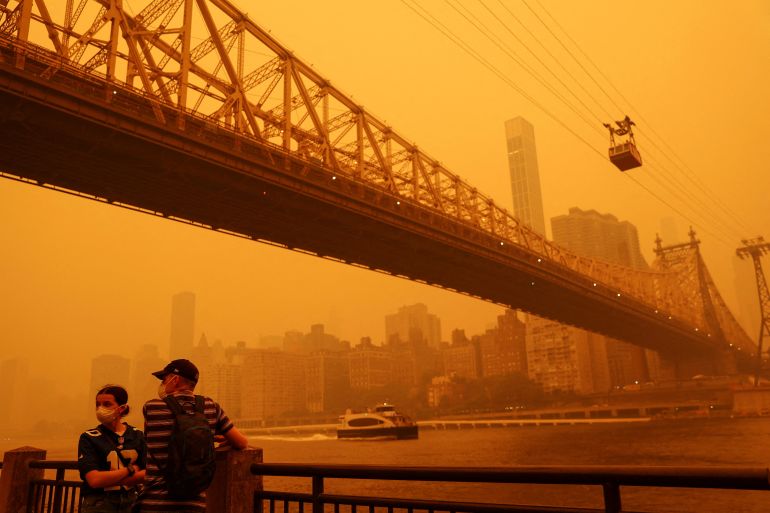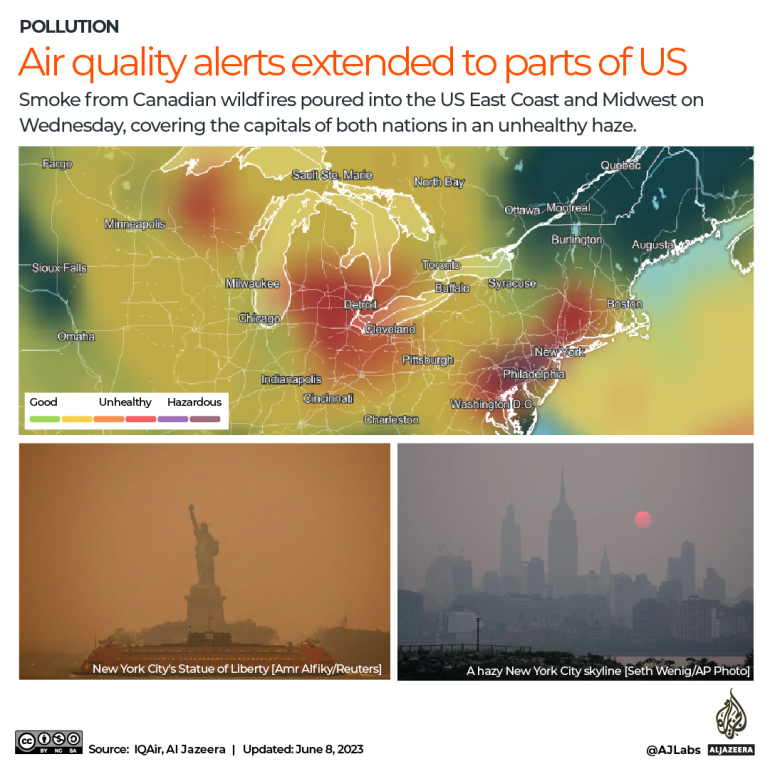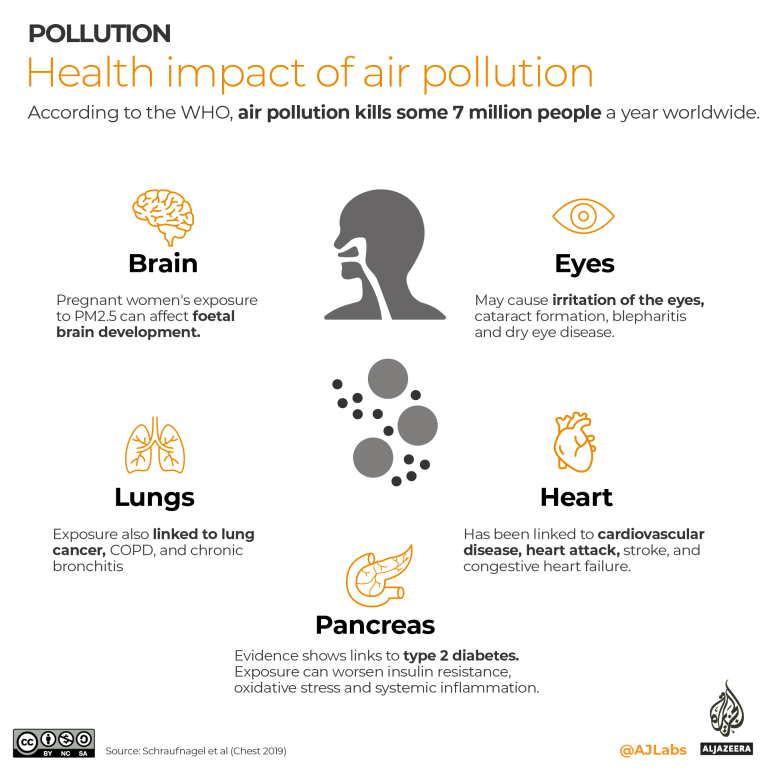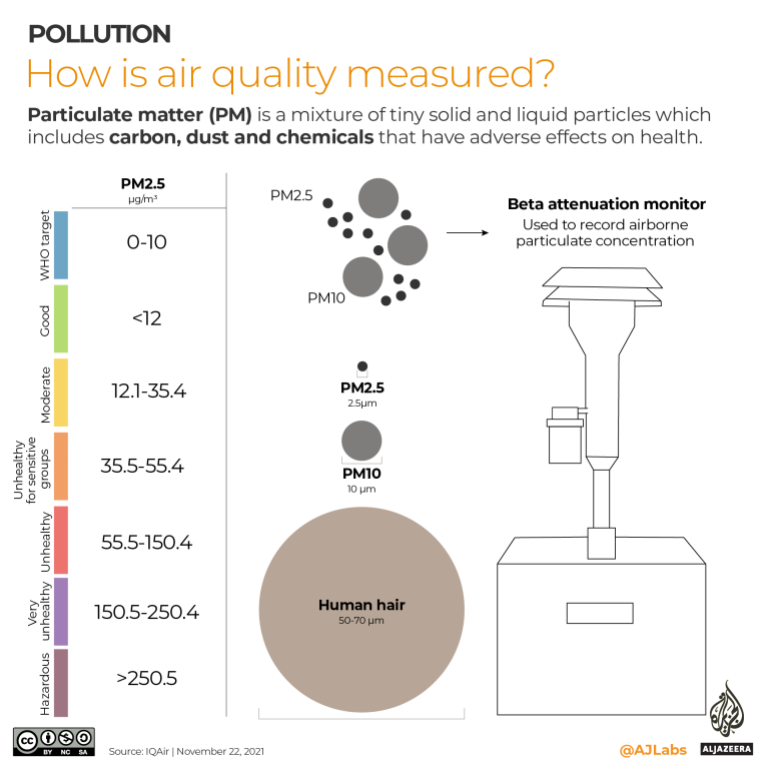Wildfires in Canada, US: How to stay safe if you are affected
Smoke from Canadian wildfires poured into the US East Coast and Midwest, triggering air quality alerts in major cities including New York.

Smoke from Canadian wildfires has shrouded New York in a record-breaking apocalyptic smog as cities along the United States East Coast issued air pollution warnings and thousands evacuated their homes in Canada.
In Canada, the devastating fires have displaced more than 20,000 people and scorched more than 3.8 million hectares (9.4 million acres) of land.
Keep reading
list of 3 itemsWildfires prompt hazy skies, air quality warnings in Canada, US
Canada’s record wildfires should be ‘wake-up call’, experts warn
Here is what we know about the wildfires, the spreading smoke and how to stay safe if you’re in the affected areas:

What’s happening in the US and Canada?
Smoke from Canada’s wildfires has been moving into the United States with fires near Quebec burning since last month.
Unusually hot and dry weather intensified the wildfires. As of Wednesday, nearly 160 wildfires were burning in the province of Quebec alone.
On Wednesday, air quality alerts were in effect in the US for southern Michigan and Wisconsin, northern Ohio and parts of Pennsylvania, New Jersey and New York where a high concentration of pollutants was forecast.
New York was enduring the worst air quality index (AQI) of any major city in the world, according to IQAir.com, which tracks air quality around the world.
BREAKING: The Air Quality Index in New York City has spiked to 342, which is the “Hazardous” category. This means everyone is at a high risk of adverse health effects. There’s currently no other major city anywhere on Earth with worse air quality. #NYwx pic.twitter.com/kjthgQzNq2
— Collin Gross (@CollinGrossWx) June 7, 2023
What’s the biggest concern?
Air quality alerts are triggered by several factors, including the detection of fine-particle pollution – known as “PM 2.5” – which can irritate the lungs.
“The biggest health threat from wildfire smoke are from these very small, microscopic particles that you breathe in,” Jill Baumgartner, an associate professor in the School of Population and Global Health at McGill University in Montreal, told Al Jazeera, explaining that they can lead to a variety of problems from burning eyes and runny noses to chronic heart and lung diseases.
“We mostly worry about inflammation in the lungs” from these high levels of pollution, said Rima Habre, an expert in air quality at the University of Southern California. She added that with climate change affecting the fires, there is an increasing worry about more people being exposed to less extreme smoke for weeks or months.
Canadian researchers have reported that people who lived outside of major cities and within 50km (31 miles) of a wildfire in the past decade had a 4.9 percent higher risk of lung cancer and a 10 percent higher risk of brain tumours compared with people not exposed to wildfire.
Who should be careful?
The air quality alerts caution “sensitive groups”, a wide category that includes children, adults and people with lung diseases, such as asthma and chronic obstructive pulmonary disease.
Kids “are more susceptible to smoke for a number of reasons”, said Laura Kate Bender of the American Lung Association. “Their lungs are still developing; they breathe in more air per unit of body weight.”
How to stay safe?
It’s a good time to put off that yard work and outdoor exercise. If you go out, consider wearing an N95 mask.
Stay inside if you can, keep doors, windows and fireplaces shut. It is recommended that if you have air conditioning, you run it on a recirculation setting.
Experts also recommend investing in air purifiers, especially for those with underlying lung or heart disease.

